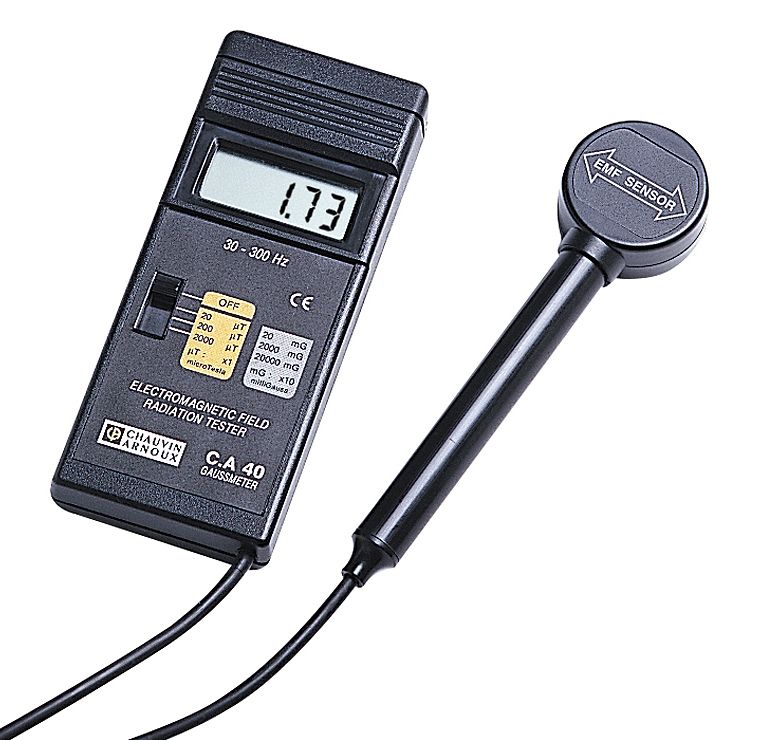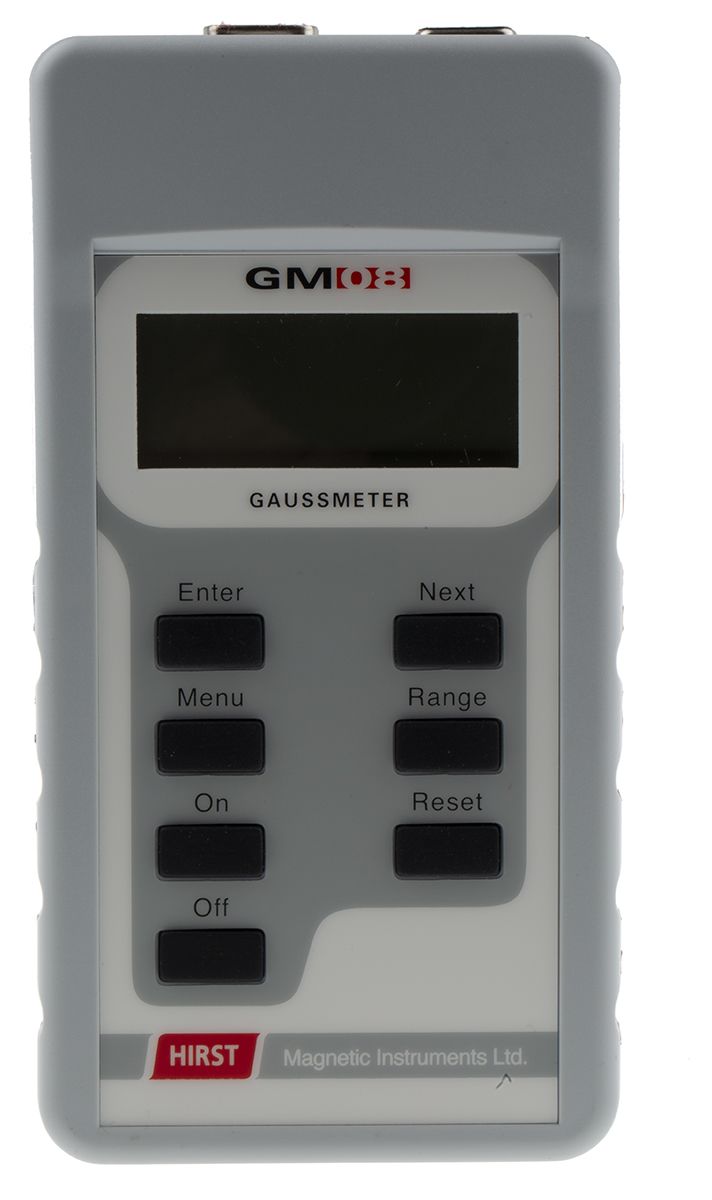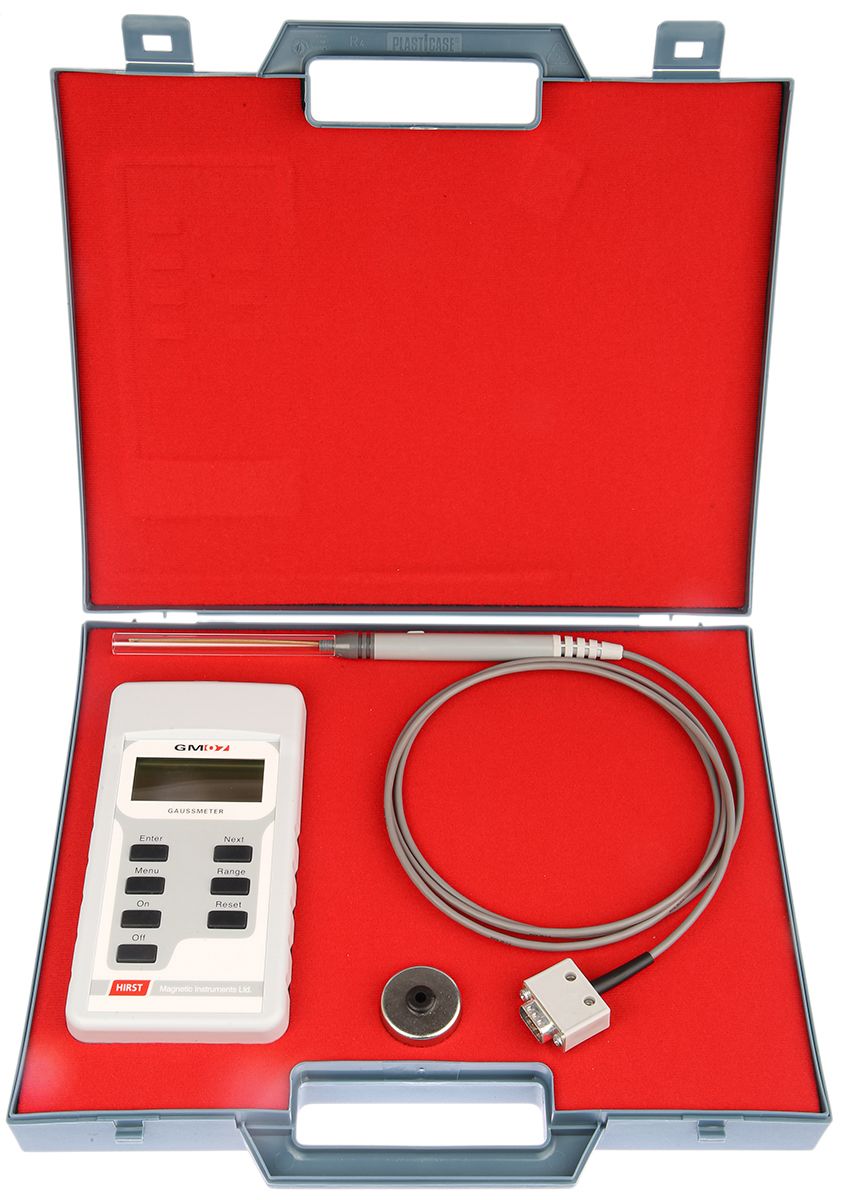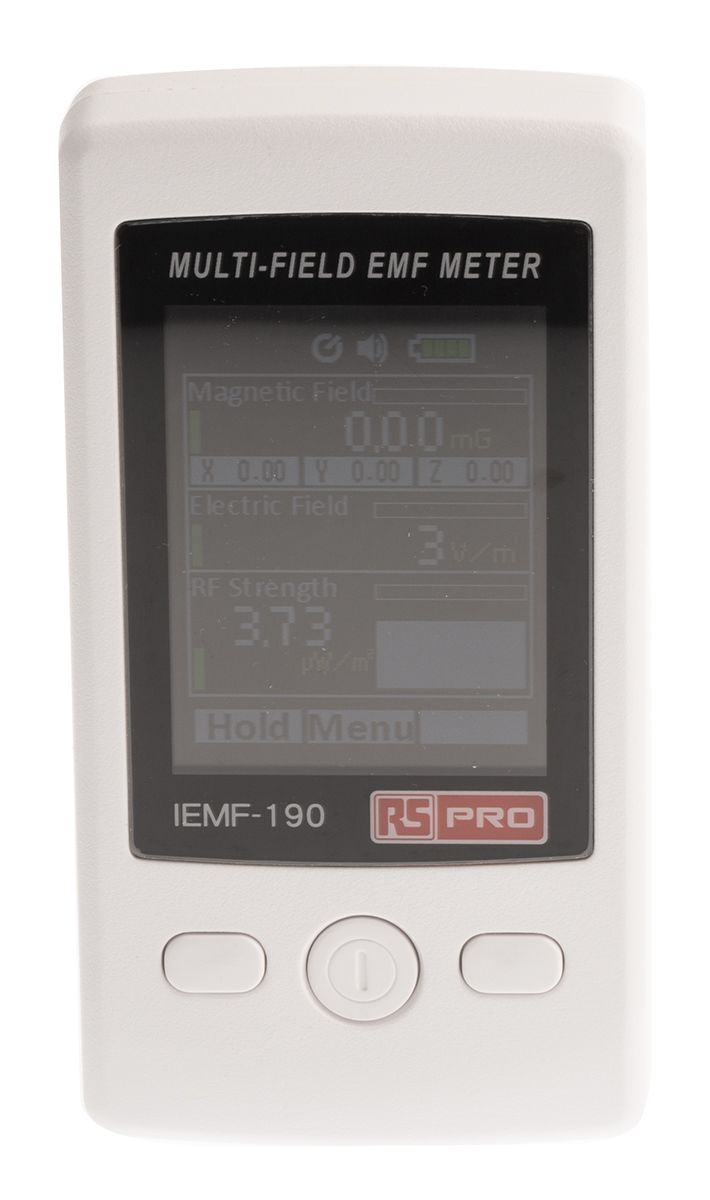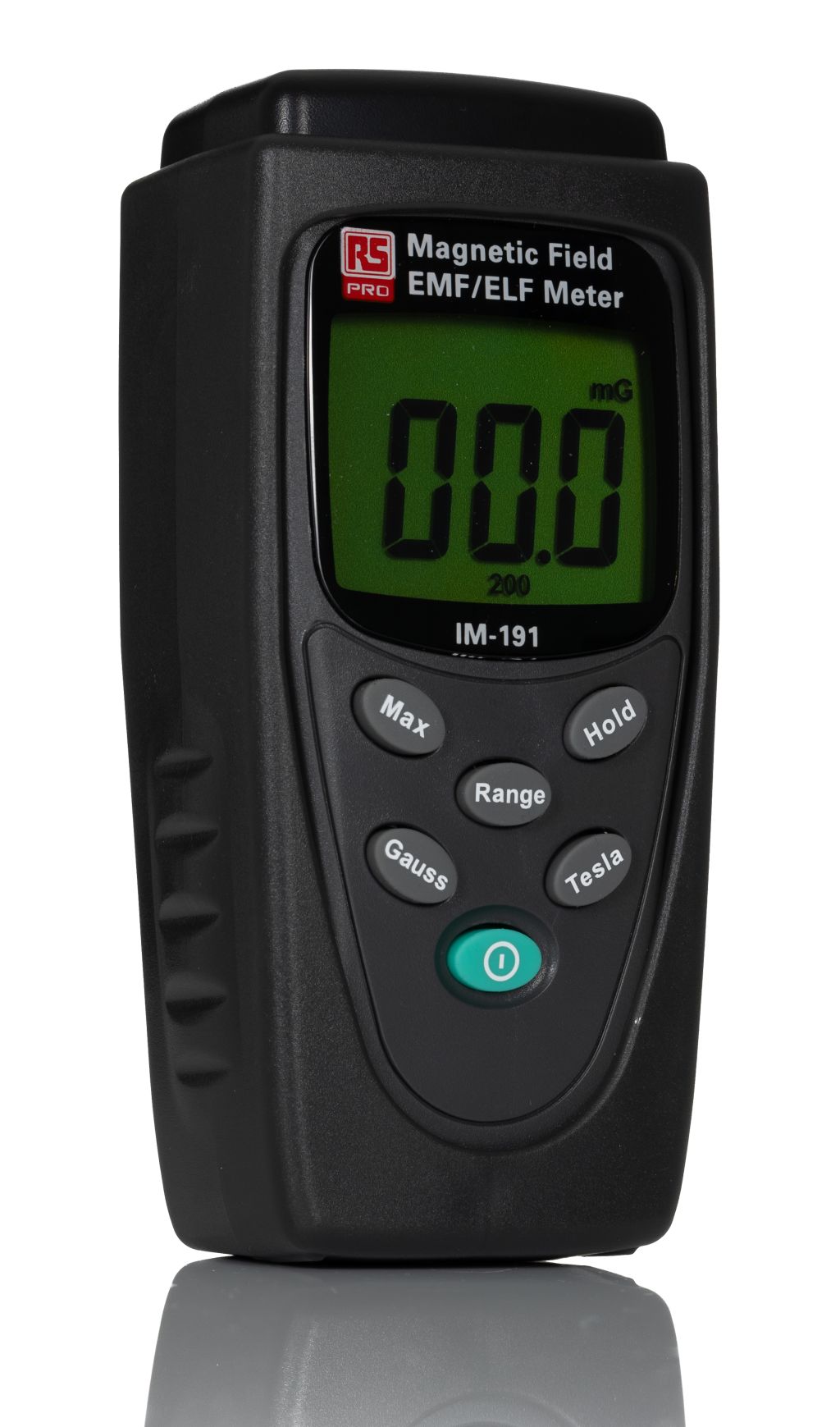RS Pro Guass Meter IM-191
Our high quality brand RS Pro presents this handheld light weight Guassmeter, a great instrument for measuring magnetic fields of extremely low frequency (ELF) of 30 to 300 Hz. With a large user friendly LCD display of 3-1/2 digits it has a display range of 20, 200 and 2000. Display units are featured in micro-Tesla and mini-Guass, with an overload indication (LCD displays ‘OL’) and a low battery indication. With around 100 hours of battery life, measurement and testing is accurate and easy using the large soft press button panel.
SUPPLIED_WITH : 9 V battery, carrying case, user manual
Features and Benefits:
• Resolution 0.1/1 mG or 0.01/0.1 μT
• Frequency response 30 Hz to 300 Hz
• Sensor, single axis
• Accuracy ± (2.5% + 6 digit) at 50/60 Hz
• Sample rate 2.5 times per second
• Data hold (HOLD) and Maximum (MAX) hold functions
• Operating temperature & humidity 5℃ to 40℃, below 80% RH
• Dimensions 130 x 56 x 38 mm
• Weight approximately 170 g
Application includes: Electric transmission equipment, Power lines, Air conditioners, Refrigerators, Computer monitors and Video/audio devices.
How Does a Gauss Meter Work?
Guassmeters are a Hall probe, a test current is sent by the meter through the probe. This Hall affect produces a voltage and the meter then records this. Often the highest voltage detected is used or frozen by the meter as voltage fluctuation is common given that magnetic fields are rarely static.
Did you know?
Carl Friederich Gauss born in 1777 developed one of the first devices that could measure direction and strength of a magnetic field. He was a pioneer in this type of study and a great mathematician. He created the system used to measure magnetism and is the reason the modern unit of flux density is named Guass and why we call these units Guass meters.
